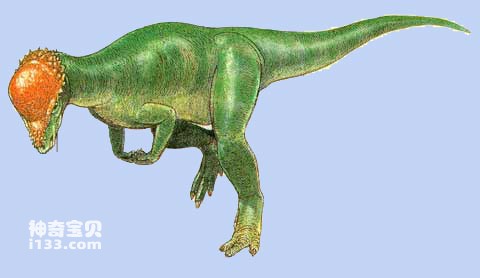In the late Cretaceous period from 100 million to 65 million years ago, the dinosaur kingdom has entered its twilight period. But just as the end was approaching, many strange groups evolved in the dinosaur family. These new "actors" made the final scene of the dinosaur world extraordinarily brilliant.

Pachycephalosaurus
Pachycephalosaurs are a very unique group of these new "actors". The main feature that distinguishes them from other dinosaur groups is the abnormal swelling and thickness of the bones on the top of their heads. Therefore, scientists speculate that they are likely to be like goats. The males often head-butt each other, and the winner can be in the group. maintain a high social status.
The Pachycephalosaurus discovered in the Mongolian Plateau is one of the earliest representatives of Pachycephalosaurus.
The specimen of Palastosaurus only has a broken skull, but the thickness of the top of this skull, which is less than 13 centimeters high, reaches 10 centimeters! Such a peculiar skull can only belong to Pachycephalosaurus. Its function is probably to resist the huge impact force generated when violent collisions with each other, so that the brain and other organs of the head will not be damaged.
Scientists speculate that Pagocephalosaurus is 2 meters long and weighs less than 50 kilograms. It is a small species in the Pachycephalosaurus family.
Pachycephalosaurus lived on the Mongolian Plateau 80 million years ago. Their habitat is a dry, and sometimes desert, environment. Plant fossils found from the same period bear this out, as they are drought-tolerant types. However, the Gobi Desert on the Mongolian Plateau today is drier than it was in the era of dinosaurs. This is because the sea level at that time was higher than now, and more water vapor from the ocean could reach there to form rainfall. Therefore, the climate in the Gobi was wetter than now, and many shallow ponds or lakes could be formed during the rainy season.
animal tags:
We created this article in conjunction with AI technology, then made sure it was fact-checked and edited by a Animals Top editor.